*EXCLUSIVE* 1938 German Pilot Named 'Staff Sargent Mortiz' Linen Luftwaffe Aviator Map of 'Marseilles' (southern France)
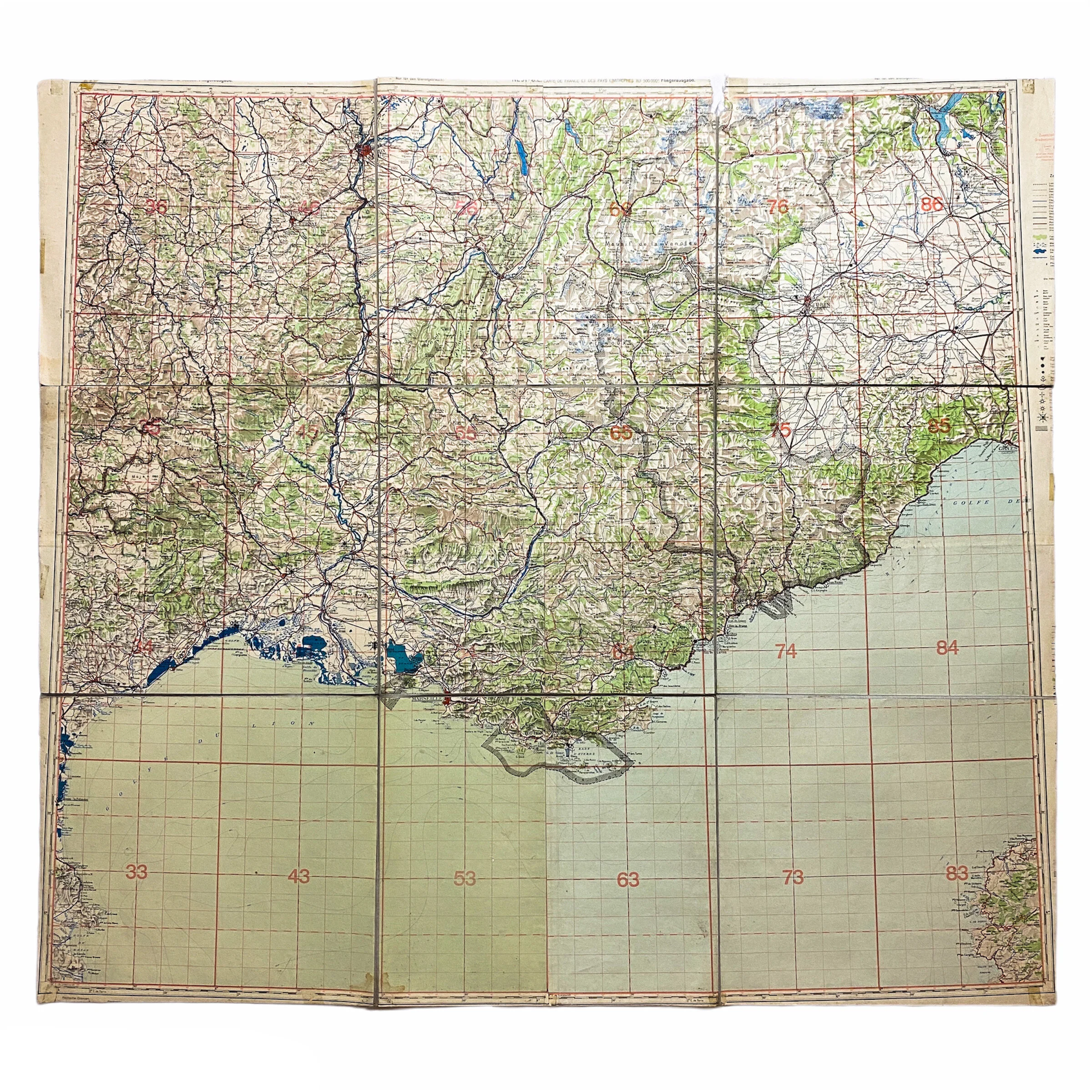
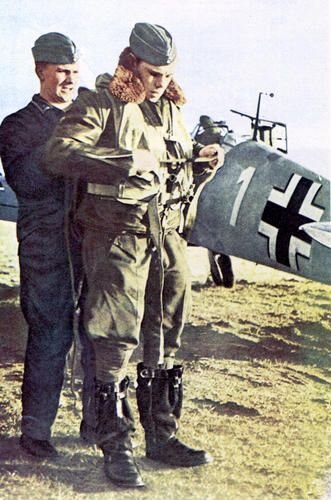


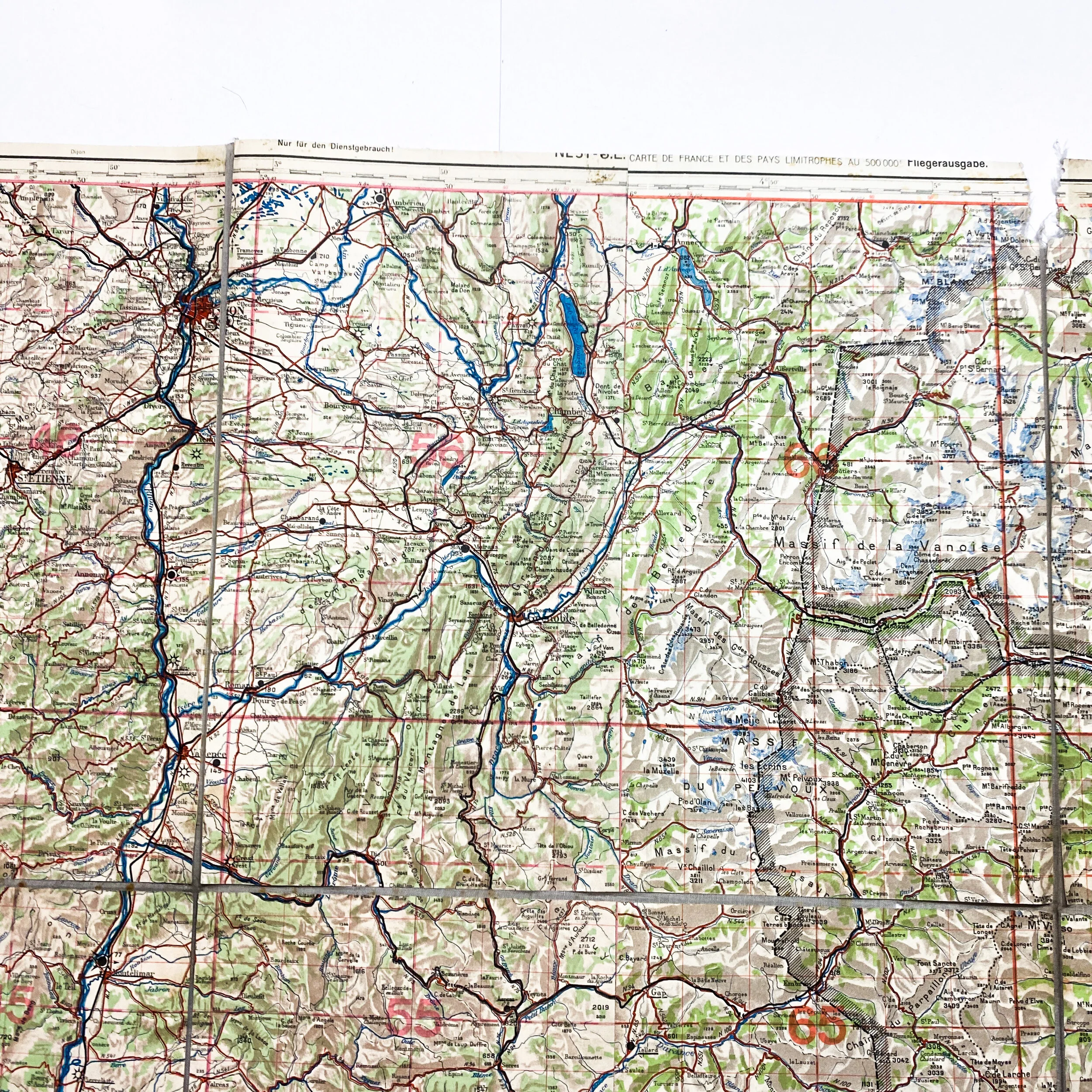

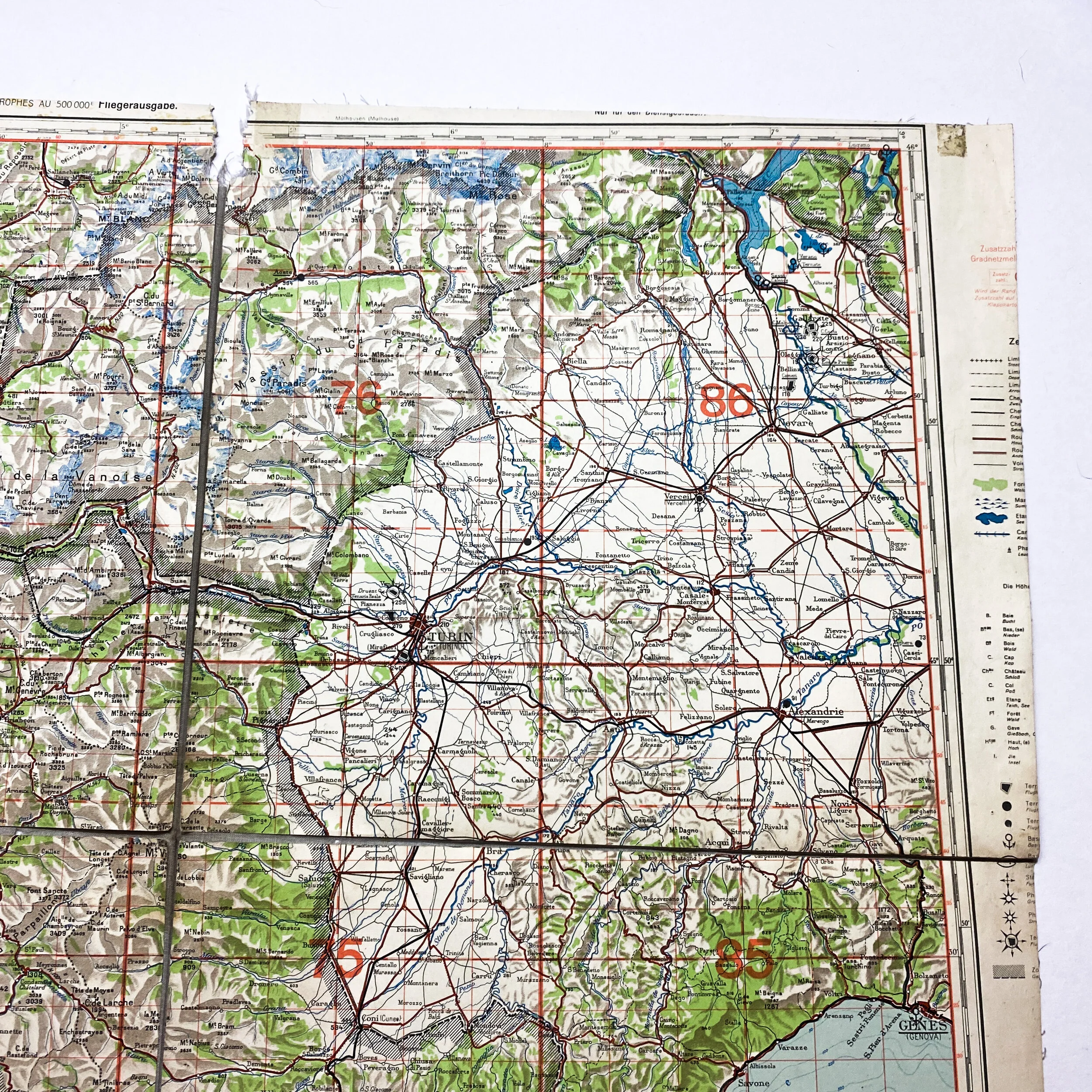



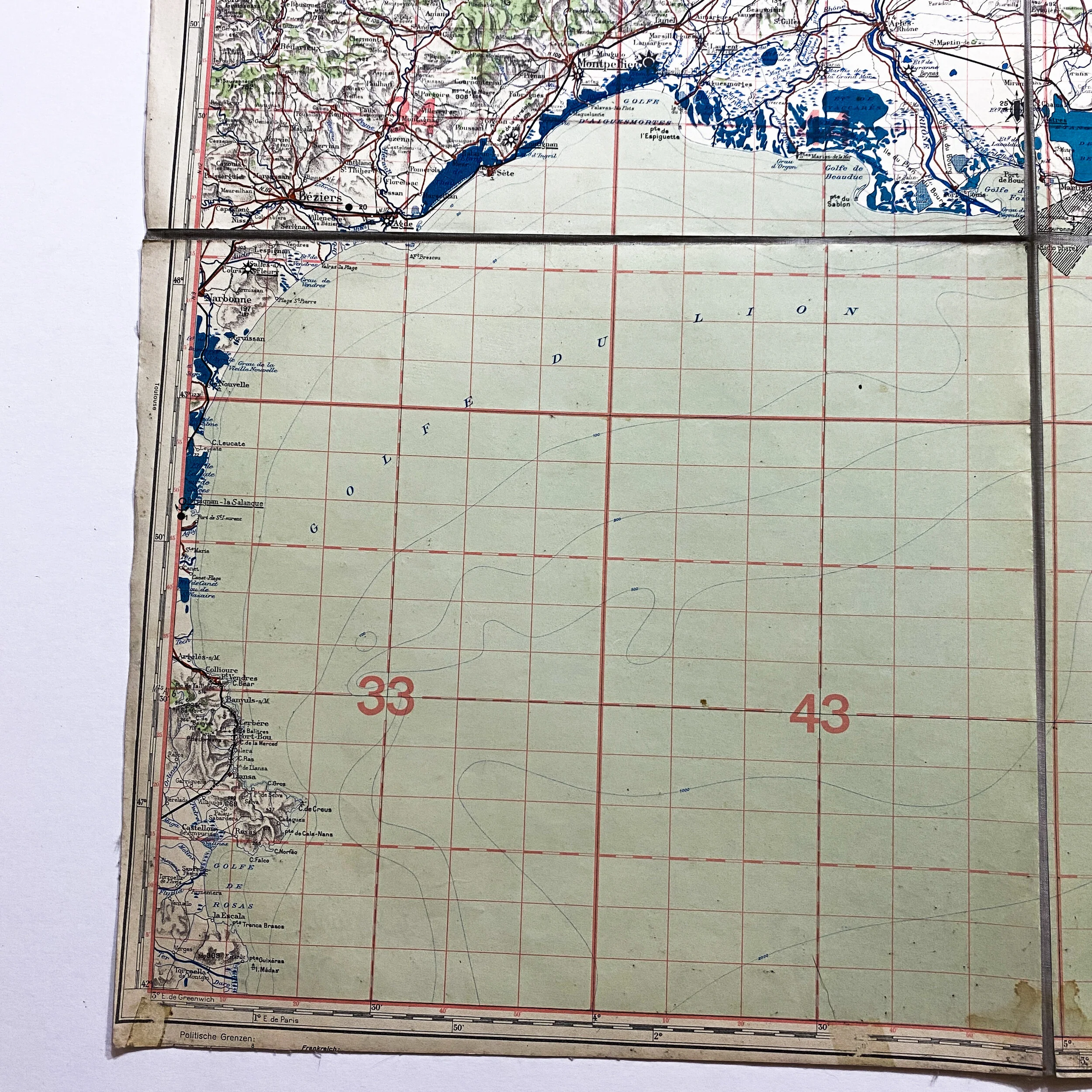





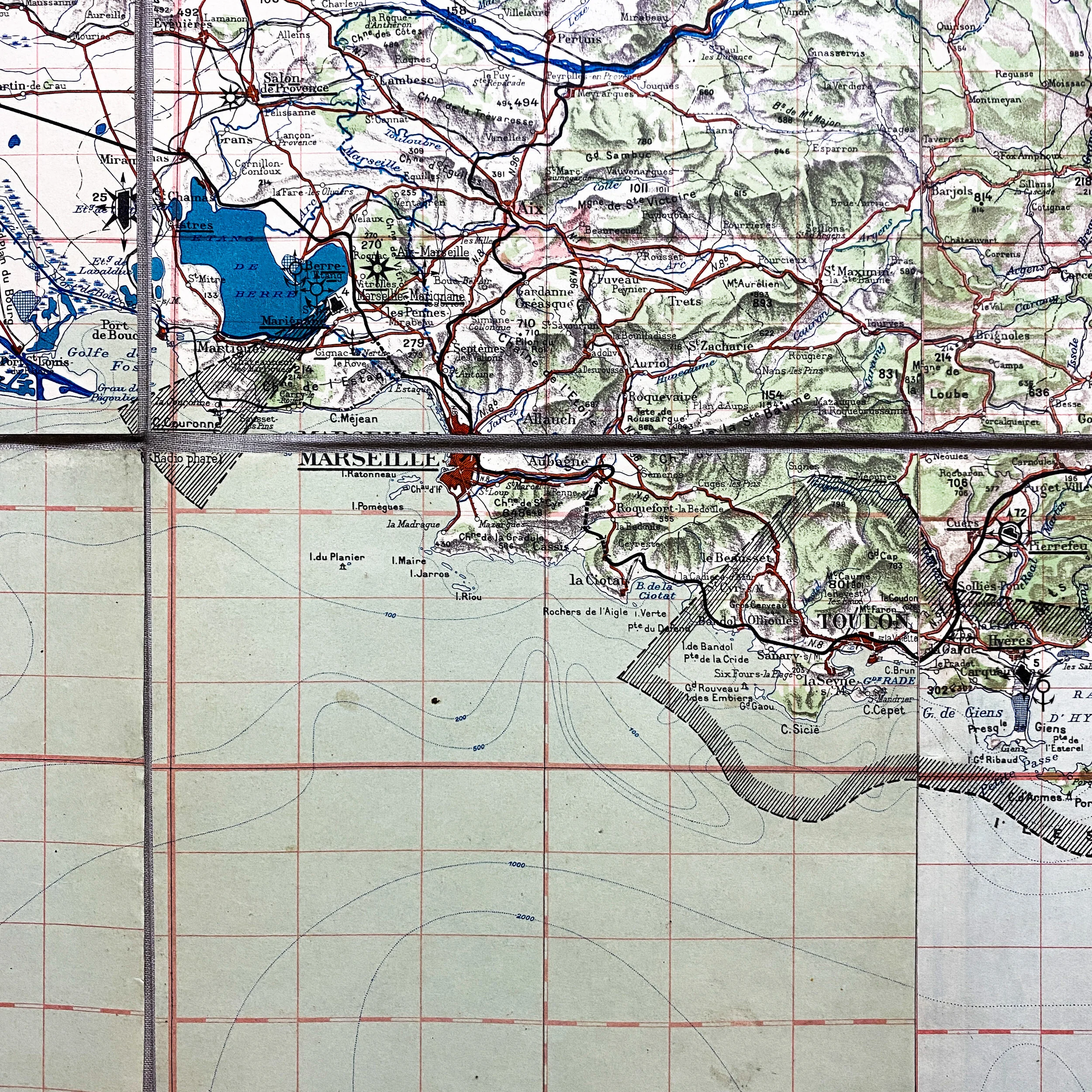









*EXCLUSIVE* 1938 German Pilot Named 'Staff Sargent Mortiz' Linen Luftwaffe Aviator Map of 'Marseilles' (southern France)
Museum Grade WWII Artifact:
Size: 37 x 40 inches
This incredibly large 1938 dated southern France linen aviator map is named to a German Luftwaffe ‘Feldwalbe’ (Staff Sargent) Mortiz. This map still shows the writing of the staff sergeant on the back heavy duty linen side with his hand written name as well as the map label of ‘Marseile’. The map is constructed from nine individual paper grids adhered to a heavy duty cloth backing. This heavy-duty cloth material as well as grid sectors seen within the map were commonly carried by Luftwaffe pilots an airmen during WWII. The map is marked in German and is labeled as “Only for Service Use” and “Aviator Edition”. The map shows important southern France towns and cities, naval locations, docks, landmasses and other important landmarks in the area occupied by the Nazis prior to the Allied invasion.
This map would have been used by German Luftwaffe pilots and bomber crews in the area of Southern France during their initial takeover and occupation of Marseilles and other southern France port cities as well as the upcoming Allied D-Day codenamed Operation Dragoon. Maps such as these have been documented to have been used for in-flight navigation by German pilots as well as during the pre-bombing and mission briefings. This map sparks an interesting piece of history as it was used to oppose the Allied landings of southern France.
Operation Dragoon:
Operation Dragoon (initially Operation Anvil) was the code name for the Allied invasion of Southern France on 15 August 1944. The operation was initially planned to be executed in conjunction with Operation Overlord, the Allied landing in the Normandy, but the lack of available resources led to a cancellation of the second landing. By July 1944 the landing was reconsidered, as the clogged-up ports in Normandy did not have the capacity to adequately supply the Allied forces. Concurrently, the French High Command pushed for a revival of the operation that would include large numbers of French troops. As a result, the operation was finally approved in July to be executed in August.
The invasion of southern France under Operation Dragoon aimed to relieve the overwhelming pressure on the Allied logistical systems in the north by securing additional south coast ports and also creating another front to further divert German resources. Following preliminary commando operations and naval bombardment to weaken defenses along the coast, the landings began on 15 August and quickly established three different beachheads. The initial attacks caught the Germans off guard; they were unable to form a sizable counterattack until 16 August, partly due to sabotage of communications by the French Resistance and also a lack of fighting forces. The counterattacks were ineffective against the superior numbers of the Allied invasion force and the official order was given to retreat north by 16 August. Among the invading army were units of the French army who moved to assault the garrisoned forces who had established themselves in the ports of Marseilles and Toulon.
Battle of Marseille:
The Battle of Marseille was an urban battle of World War II that took place August 21–28, 1944 and led to the liberation of Marseille by Free French forces under the command of General Jean de Lattre de Tassigny. The groundwork was laid by the Allied invasion of southern France in Operation Dragoon on 15 August 1944 by the United States Seventh Army, with major support from the French First Army. German defenses centred on almost static infantry units guarding the coastal areas, with 11th Panzer Division providing a mobile reserve. At Marseille the 244th Infantry Division (Wehrmacht) provided the main defense, comprising three Grenadier regiments, the 932nd, 933rd and 934th together with an artillery regiment. Existing French Army defensive points, including large artillery batteries, provided a reasonable seaward defense. The landward side defense was augmented with mines and the digging of weapons pits, trenches and tank obstacles. On 20 August the Germans scuttled the ships that were in the harbour: one tanker, one cable laying ship, three passenger ships, and 20 cargo ships.